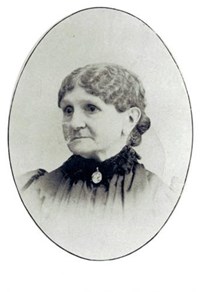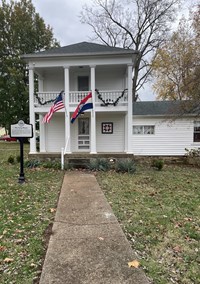- Lowell National Historical Park (27)
- Blackstone River Valley National Historical Park (10)
- Golden Gate National Recreation Area (9)
- Cuyahoga Valley National Park (7)
- Indiana Dunes National Park (6)
- Alcatraz Island (5)
- Bering Land Bridge National Preserve (5)
- Chesapeake Bay (5)
- Boston National Historical Park (4)
- Show More ...
- National Register of Historic Places Program (11)
- National Heritage Areas Program (10)
- Park Cultural Landscapes Program (4)
- National Historic Landmarks Program (3)
- Technical Preservation Services (3)
- Denver Service Center (2)
- National Center for Preservation Technology and Training (2)
- Park History Program (2)
- Air Resources Division (1)
- Show More ...
Showing 326 results for industrialization ...
- Type: Place

Discover the Seaford Museum, a hidden gem in downtown Seaford, Delaware. Just steps from the Nanticoke River, this award-winning museum showcases the region’s rich history, from Harriet Tubman’s Underground Railroad connections to its maritime legacy. Explore interactive exhibits on shipbuilding and oyster shucking. After your visit, enjoy a scenic stroll along the River Walk, where Seaford’s waterfront industry stories come to life!
Marching for Justice in the Fields
- Type: Article

The farm workers who marched from Delano to Sacramento represented the large, seasonal labor force, composed overwhelmingly of people of color, whose labor made California’s thriving agricultural industry possible. Although their labor produced fortunes from the soil, they were subjected to poor wages and working conditions. This article is an introduction to the issues that motivated the Delano Grape Strike and the 1966 march.
A Continuing Struggle
Henry Blake Fuller
- Type: Person

Henry Blake Fuller was a key figure in the Chicago Literary Renaissance, renowned for pioneering social realism in American literature. He is noted for being one of the first American novelists to explore homosexual themes. Fuller had a complicated love-hate relationship with Chicago. He frequently found solace at Indiana Dunes, which served as a retreat from urban life and a source for inspiration.
- Type: Place

The Ohio and Erie Canalway National Heritage Area spurred economic development across the nation by creating an inland connection for goods from Lake Erie to the Ohio River, known as the heartland of America to the eastern seaboard. This development fueled westward expansion, a national market economy, a booming industrial manufacturing sector, and the settlement of towns, villages, and cities along the canal.
Harriet Colfax
- Type: Person

Born along the St. Lawrence River, determined Harriet Colfax found herself far upstream along the treacherous coast of Southern Lake Michigan after moving to a young Michigan City in 1853. For 43 careful years she watched the rough frontier city blossom to a Duneland metropolis; she fearlessly maintained the harbor beacon as lighthouse keeper while enduring the ensuing hardships with her lifelong companion Ann Hartwell.
- Type: Place

Frances Perkins was by far one of the most important women of her generation. In 1932, her long and distinguished career as a social worker and New York State Industrial Commissioner took an important turn for American women, and for the country as a whole, when she was appointed U.S. Secretary of Labor, the first woman ever to be included in a president's cabinet.
The Knights of Labor: Strikes of 1885 and 1886
- Type: Article

In the decades after the Civil War during Reconstruction, the United States began to rapidly industrialize. Beginning in the late 1860s, laborers – many of them Civil War veterans - began to organize labor unions. One of the most prominent unions that emerged during this time was the Knights of Labor, founded in 1869 in Philadelphia. In 1885, members of the Knights of Labor went out on strike against railroad financier Jay Gould and won.
- Type: Article

Black whalers were among the first Americans to reach Alaska, specifically its southeast panhandle, in the early 1840s. Some of these men had escaped enslavement in the American South, while others were free men of color from the North. It would have been difficult to find a more racially and geographically diverse industry than whaling in the nineteenth century.
Forged in the Fire of Revolution: David Wilkinson and the Rise of American Industry
Bicentennial Blues
- Type: Article

A lot can happen to a family business in 200 years. The Whitin Machine Works, based out of Whitinsville, Massachusetts, is a prime case study in the rise and fall of the age of American manufacturing. From a small forge in a rural area, the Fletcher and Whitin families created a veritable dynasty along the Mumford River. Starting with basic tools, heirs to this business made an industrial powerhouse.
Historic Long House
- Type: Place

The Long House was constructed in 1833 by Phillip Long and Isabella (Murphy) Long. It was originally built of log construction, and additions were later added. On the lawn there is a granite pyramid identifying the first industry in Farmington, a tannery, owned by Phillip Graham Long. The house is typically open for tours during the first weekend of June and select dates during the holiday season.
Byron A. Smith
- Type: Person

Byron A. Smith served in the US Navy during World War II, voluntarily enlisting as an apprentice seaman (AS) in 1943. Prior to serving in the Navy, Smith worked at the Campbell, Wyant and Cannon Foundry Company in Michigan, a company that provided critical contributions to the defense industry. After completing different training schools, Smith was assigned to the USS Cassin Young. Smith was killed when a kamikaze attacked the destroyer.
Ken-Tuck-U-Inn
- Type: Place

As logging in the area faded, many local entrepreneurs looked for other ways to earn a living. Bertie Bancroft, who grew up in Aral, saw the growing tourist trade and built the Ken-Tuck-U-Inn. Bertie and his wife Donna operated the inn. Other farm inns were developing as the local economy was turning to serve the growing tourist industry. Produce grown on the farm was used to make meals for the guests, which was more valuable than selling it wholesale to local markets.
Lock 29 Trailhead Information
- Type: Place

The Ohio & Erie Canal made Peninsula a busy industrial town and popular overnight stop for canal travelers. Today visitors can stroll through the historic downtown, shop, and dine. Lock 29 Trailhead is a popular, often crowded access point for the village, Towpath Trail, Cuyahoga Valley Scenic Railroad, and Cuyahoga River Water Trail. On the towpath, travel 2.3 miles north to the village of Boston. About a mile south is Deep Lock and connecting trails to old stone quarries.
Old Slater Mill
- Type: Article

This series of lessons develop an understanding of the significance of Waterloo, Iowa, an American World War II Heritage City. Highlights include defense industries and the increased opportunities for women during wartime. One lesson explores the home front impacts of the service and sacrifice of the local Sullivan brothers. The lessons connect to larger themes of the U.S. home front during wartime. A mix of primary and secondary sources are used, along with photos and media.
- Type: Article

Four lessons support the development of understanding the significance of Waterloo, Iowa, an American World War II Heritage City. Highlights include defense industries and increased opportunities for women during wartime and women in service. One lesson explores the home front impacts of the service and sacrifice of the local Sullivan brothers. The lessons highlight specific contributions but connect to larger themes and understandings of the U.S. home front during WWII.





